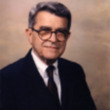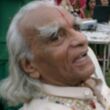8 steps to a pain-free back: natural posture solutions for pain in the back, neck, shoulder, hip, knee, and foot
Description
With a fresh approach to a common problem, this self-help guide to overcoming back pain advocates adopting the natural, healthy posture of athletes, young children, and people from traditional societies the world over. Arguing that most of what our culture has taught us about posture is misguided—even unhealthy—and exploring the current epidemic of back pain, many of the commonly cited reasons for the degeneration of spinal discs and the stress on muscles that leads to back pain are examined and debunked. The historical and anthropological roots of poor posture in Western cultures are studied as is the absence of back pain complaints in the cultures of Africa, Asia, South America, and rural Europe. Eight detailed chapters provide illustrated step-by-step instructions for making simple, powerful changes to seated, standing, and sleeping positions. No special equipment or exercise is required, and effects are often immediate.
More Details
9780979303685
Table of Contents
From the Book
Similar Titles From NoveList
Published Reviews
Library Journal Review
After suffering major back pain and undergoing unsuccessful surgery, Gokhale attended classes in France and at Stanford University on posture-modification techniques. Here, she explains how she came to develop her own method for back health, incorporating words, illustrations, and lush photographs to demonstrate eight lessons on sitting, lying down, standing, lifting, and walking. Each lesson contains goals and objectives, step-by-step instructions, indications of improvement, troubleshooting tips, and further information. Photos illustrate correct and incorrect movements. Appendixes provide additional exercises, anatomical drawings, a glossary, and a bibliography. Testimonials from some physicians and satisfied patients pepper the book, as do a few promotional ads for Gokhale's clinic, web site, and products. Gokhale's advice to bend straight down from the hips to pick up low items will make many physical therapists shudder; some recommended movements may be too subtle for readers to execute without professional guidance. Still, Gokhale's point about bad posture causing back problems is valid. Recommended to supplement larger collections.-Janet M. Schneider, James A. Haley Veterans Hosp. Lib., Tampa, FL (c) Copyright 2010. Library Journals LLC, a wholly owned subsidiary of Media Source, Inc. No redistribution permitted.
Library Journal Reviews
After suffering major back pain and undergoing unsuccessful surgery, Gokhale attended classes in France and at Stanford University on posture-modification techniques. Here, she explains how she came to develop her own method for back health, incorporating words, illustrations, and lush photographs to demonstrate eight lessons on sitting, lying down, standing, lifting, and walking. Each lesson contains goals and objectives, step-by-step instructions, indications of improvement, troubleshooting tips, and further information. Photos illustrate correct and incorrect movements. Appendixes provide additional exercises, anatomical drawings, a glossary, and a bibliography. Testimonials from some physicians and satisfied patients pepper the book, as do a few promotional ads for Gokhale's clinic, web site, and products. Gokhale's advice to bend straight down from the hips to pick up low items will make many physical therapists shudder; some recommended movements may be too subtle for readers to execute without professional guidance. Still, Gokhale's point about bad posture causing back problems is valid. Recommended to supplement larger collections.—Janet M. Schneider, James A. Haley Veterans Hosp. Lib., Tampa, FL
[Page 126]. Copyright 2008 Reed Business Information.






























